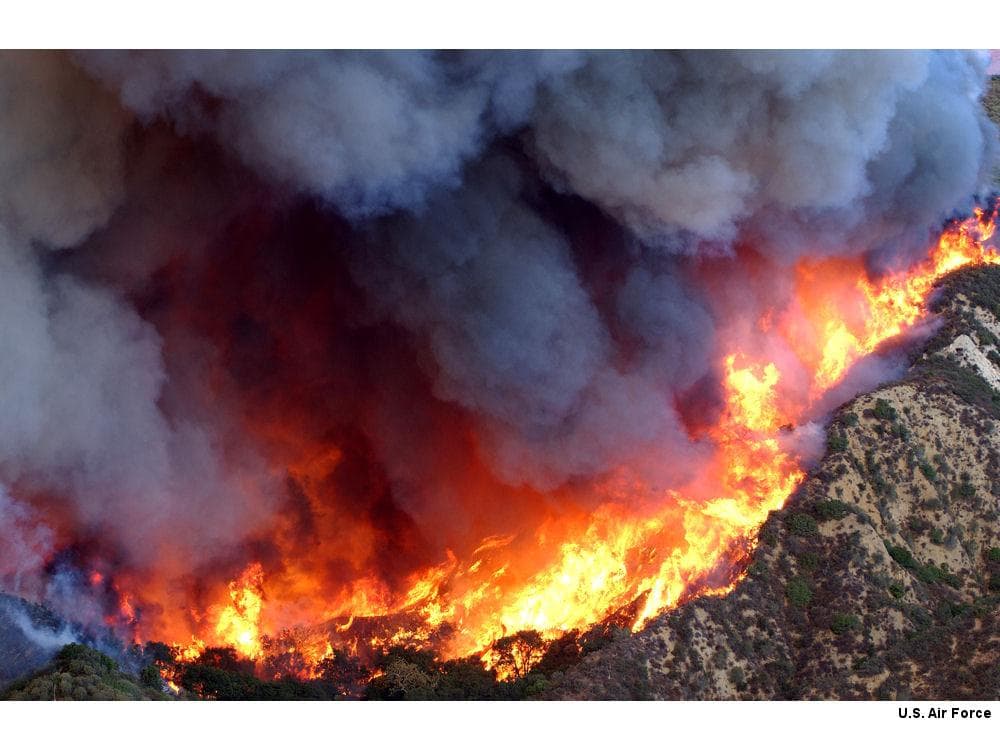Fires require a source of ignition at a temperature above the ignition temperature of the available combustible material and possessing sufficient energy to raise the temperature of the available combustible material above its ignition temperature. The common natural source of ignition is lightning. However, faulty electric transmission and distribution infrastructure, accidental spread of cooking and campfires from homeless encampments and intentional arson are also common sources of ignition which cause fires which can develop into wildfires if there is sufficient combustible material available.
Climate change has been accused of making wildfires more frequent and/or more intense. However, climate change cannot cause a fire because it does not possess the necessary characteristics of a source of ignition, so it is incapable of making wildfires more frequent. Wildfire intensity is a function of the mass and condition of available combustible material, which some have suggested are more available or more prone to ignition as the result of climate change. However, there are far more significant factors which affect combustible material availability, including poor forest and grassland management. No data are available to support an assertion of incremental climate change effect.
However, the pursuit of climate change policies by governments have introduced several new “fire starters” which could cause wildfires if not properly managed. Solar collector arrays, wind turbines and grid-scale storage systems all have the potential to catch fire and to start secondary fires in the presence of combustible materials.
This image shows a fire in a ground mounted solar collector array. The solar array is surrounded by grass, which could easily spread the fire if it were sufficiently dry. One recent fire in Australia spread to tall grass in the area surrounding the collectors. Australia has experienced fires at solar installations caused by electric transformer and inverter failures. Damage to solar collector arrays caused by high winds or tornadoes can damage collector electrical connections and interconnecting wiring. Solar array fires are relatively easy to address because the collectors and other system components are located near the ground and accessible to firefighters.
Wind turbine fires are more frequent than solar array fires, and are not accessible to firefighters because of the height of the turbine assemblies. The most common cause of wind turbine fires is lightning strikes, which can ignite the turbine blades or the lubricating oils in the turbine machinery. Firefighters are limited to controlling the spread of secondary fires on the ground surrounding the wind turbine resulting from burning debris falling from the burning turbine. Such fires can spread quickly if the wind turbines are surrounded by relatively dry vegetation. Firefighters must also maintain a safe distance from the base of the turbine in case the unipole on which the turbine is mounted fails and falls onto the ground.
Grid-scale battery storage systems have experienced numerous fires. These fires are believed to have resulted from internal faults in the batteries, rather than from any external cause. The recent fire at the Moss Landing facility in California destroyed the older portion of the facility. These battery fires are very intense and very difficult to extinguish. Fire personnel have learned to allow them to burn themselves out while protecting the surrounding areas from secondary fires ignited by the burning batteries. These batteries also emit massive quantities of toxic smoke when they burn, frequently requiring evacuation of local residences and commercial buildings.
- ORIGINALCONTENT
